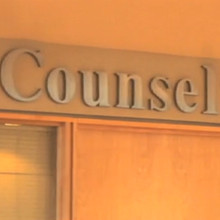Students at Indiana State University used to enjoy free mental health services from the campus’ student counseling center.
This was before the Board of Trustees, faced with mounting money problems, decided in May of 2010 to eliminate this free service.
ISU students are now allowed one free counseling session, after which they must pay a one-time fee of $60 to receive what the Board refers to as “normal counseling services.”
The Board also notes in a handout from 2010 that additional services may incur additional fees, including a $60 no-show fee and fees associated with court-ordered and university alcohol and drug related services.
And since ISU’s counseling services are regarded as a point of access fee and not a fee for service, students are not able to use any applicable health insurance benefits to help defray the cost.
This new fee structure comes in the midst of cuts across the board for ISU, which has been plagued by fiscal trouble in recent years. Gov. Mitch Daniels announced in late 2009 a $150 million cut from state funding for higher education, which translated into a nearly $11 million hit to the Terre Haute university.
ISU was forced to eliminate 108 of its nearly 1,400 full-time positions, with an additional 151 employees accepting early retirement packages in April of 2010. Less than a month later, ISU’s counseling services saw the repercussions of this newly tightened budget in the form of the new student counseling fee.
But the troubles for ISU don’t end there.
Last year, amid another round of budget cuts, it was announced that the school could suffer an additional loss of $4 million in state appropriated funds. What does all of this mean for student services?
“We have been swamped this semester,” said Kenneth Chew, the director of ISU’s student counseling center.
Chew, who has served as the counseling center’s director since the 2007-08 academic year, has presided over a record-breaking several years.
Since 2007, the total number of clients seen by Chew and his staff has risen from 445 to 553 – a 19 percent increase. Additionally, the number of total counseling sessions has also risen, from 3,402 in 2007 to 4,326 – an increase of 21 percent.
Looking even further back, the number of overall visits in the 1991-92 school year (the earliest records made available by the counseling center) was 2,200 – nearly half the amount seen currently.
Despite the influx in students seeking counseling at ISU, those same budgetary restrictions that led the Board of Trustees to institute the new fee structure has also prevented the counseling center from adding more staff.
“Our base number of professional full-time counselors has been four since as far back as I could find,” Chew said.“There have been times when the numbers were less for a period of time… and there was a two-year period where we were approved to have six full-time staff, but that funding was taken after a series of budget cuts.”
On top of the professional staffing cuts, Chew said the center recently lost its office manager position, making the retrieval of the data provided for this story an additional laborious and time-consuming task.
In fact, the data provided by Chew for this report was, “based off an old budget allocation that hasn’t really changed in the past couple of years.”
According to information provided by Chew, the current counseling center staff is at three full-time employees, with one part-time psychiatrist providing between eight and nine hours of service per week.
Up to six additional part-time contracted counselors are used to handle overflow needs. But this level of staff, necessary to handle the center’s recent influx, comes at a cost.
Apart from the full-time staff salary of $250,000 (including the vacant office administrator position), part-time contracted counselors account for approximately $70,000 per year, as well as $50,500 for the center’s contracted psychiatrist.
The daily operational budget for the center is approximately $11,000, with additional roll-over funds available from the unused portions of a $30,000 pharmaceutical allowance.
And despite the addition of the $60 counseling fee, this money is not re-circulated into the counseling center.
“We generated about $30,000, but that money does not come back to our operational budget,” Chew said. “it’s used to defer the university’s cost associated with hiring part-time contracted help.”

